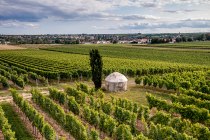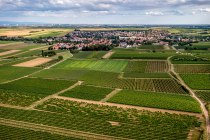Weingut Helmut Geil
Wir sind bereits seit neun Generationen in Monzernheim verwurzelt. Aktuell arbeiten, leben und lieben drei Generationen auf dem Hof. Die ältere Generation, Helmut und Brunhild, sowie die jüngere Generation Andreas und Julia mit den Söhnen Jonas und Anton. Jeder trägt mi seinen Stärken und Fähigkeiten dazu bei, dass der Familienbetrieb läuft. Viele unserer zehn Hektar Weinberge in Monzernheim, Westhofen und Bechtheim sind terrassiert. Deshalb tragen unsere Etiketten eine elegante, aber dezente Prägung: die drei Stufen. Sie stehen symbolisch sowohl für die Hanglagen als auch für unser konsequentes Streben nach höchster Qualität. Wir arbeiten im Weinberg, im Keller und im Flaschenlager stets bedacht. Jeder Jahrgang, jede Rebsorte, jede Qualitätsstufe wird liebevoll und gekonnt ausgebaut.





















